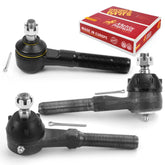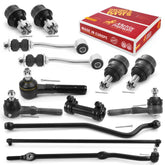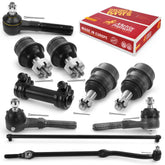Essential Tips for Troubleshooting Brake Problems at Home
Maintaining your car's brakes is essential for keeping you safe while driving. While it's always advisable to have brake repairs done by a professional, there are several diagnostic procedures you may carry out on your own to look for potential brake issues. You may learn a lot about the state of your brakes by paying attention to warning indicators and performing simple checks. We'll provide you with all the information you need to diagnose brake issues at home in this blog article, enabling you to decide whether to do the required repairs yourself or hire a mechanic with confidence.
Listen for Unusual Sounds:
One of the first indicators of brake problems is unusual sounds. Pay attention to any squeaking, squealing, or grinding noises when applying the brakes. Squeaking or squealing sounds can indicate worn brake pads, while grinding or metal-on-metal noise suggests severely worn brake pads or damaged brake components. If you notice these sounds, it's essential to have your brakes inspected promptly.
Observe Brake Pedal Behavior:
The behavior of the brake pedal can provide valuable clues about potential brake issues. If you experience a soft or spongy brake pedal that goes too far down when pressed, it could indicate air in the brake lines or a brake fluid leak. On the other hand, a hard or difficult-to-press pedal may point to a problem with the brake booster or master cylinder. Monitor the pedal behavior and take note of any abnormalities.
Check Brake Fluid Level:
The brake fluid plays a critical role in the braking system. Check the brake fluid reservoir regularly and ensure it is at the proper level. Low brake fluid level can be a sign of a leak or worn brake pads. If you notice a significant drop in brake fluid level, it's essential to address the issue promptly and have a professional inspect your brakes.
Look for Visual Signs:
Visual inspection can reveal valuable information about the condition of your brakes. Check for uneven brake pad wear, as it may indicate a caliper or brake system problem. Examine the brake pads for thickness. Worn-out pads will need replacement. Additionally, inspect the brake rotors for any signs of scoring, grooves, or excessive wear. Look out for leaking brake fluid around the tires, brake lines, or master cylinder.
Monitor Brake Performance:
Being aware of your vehicle's braking performance can help you identify potential brake problems. Pay attention to any changes in braking distance, pulling to one side, or vibrations while braking. If you notice any significant deviations from normal performance, it's advisable to have your brakes inspected by a professional.
Diagnose ABS Warning Light:
If your vehicle is equipped with an anti-lock braking system (ABS), pay attention to the ABS warning light on your dashboard. Consult your vehicle's owner's manual to understand the meaning of the ABS warning light and take appropriate action accordingly. If the light remains illuminated or if it flashes intermittently, it's crucial to have the ABS system inspected by a qualified technician.
While troubleshooting brake problems at home can provide you with initial insights, it is important to remember that these steps do not replace professional inspection and repair. Brake systems are complex, and it is best to have an experienced mechanic thoroughly examine your brakes for accurate diagnosis and safe repairs. Promptly addressing brake issues can ensure the safety of both you and your vehicle on the road. Stay vigilant, listen to your vehicle, and seek professional help whenever necessary to maintain optimal brake performance.

Metrix Premium Chassis Parts brake discs and brake pads will be available for purchase on our website in 2023! For all your steering & suspension and brake parts needs, make sure to visit our Online Catalog.









